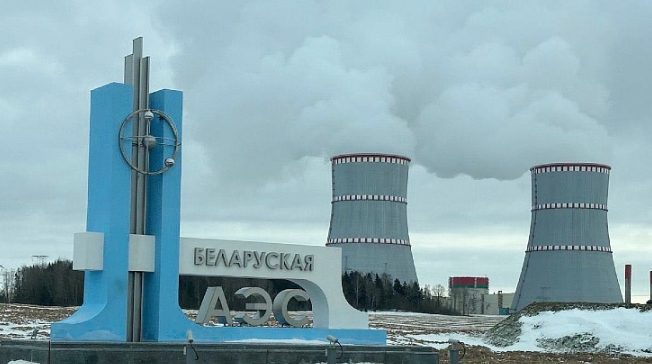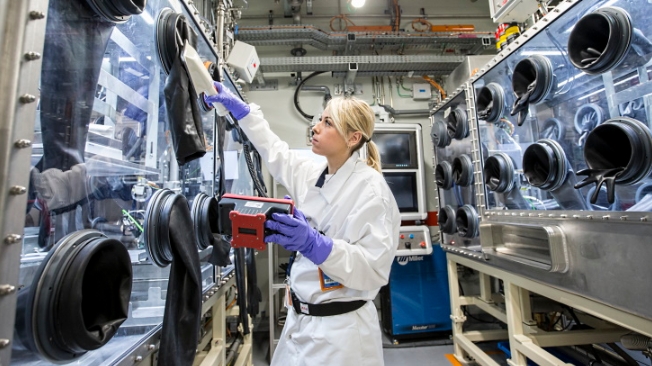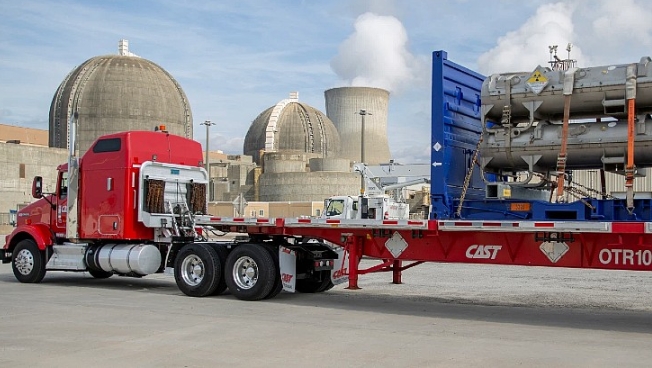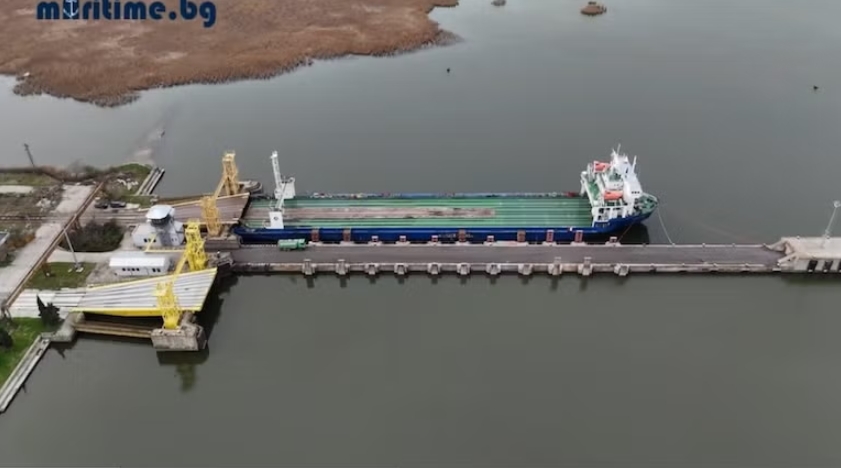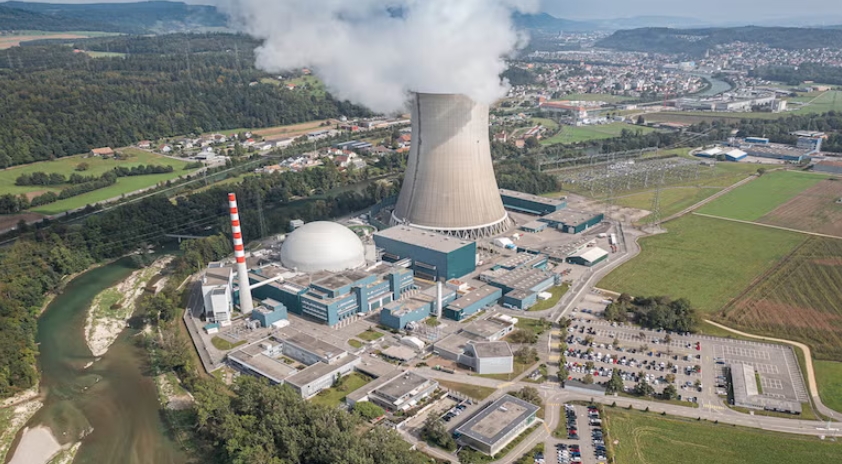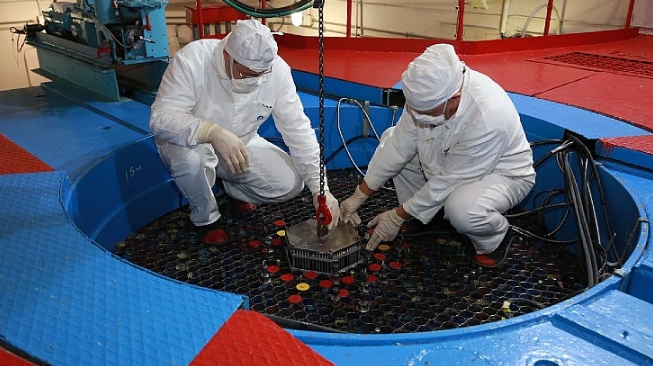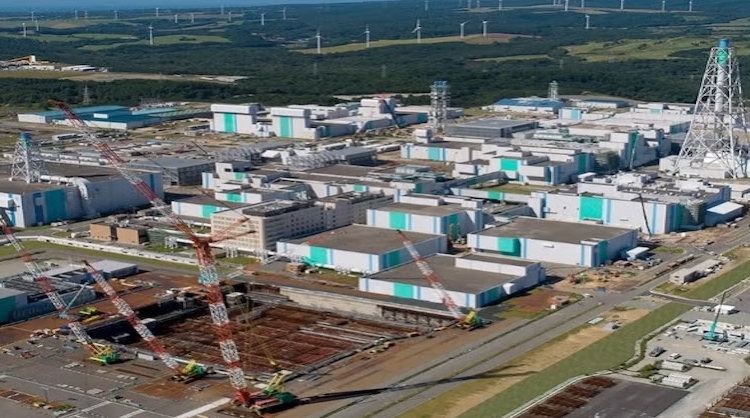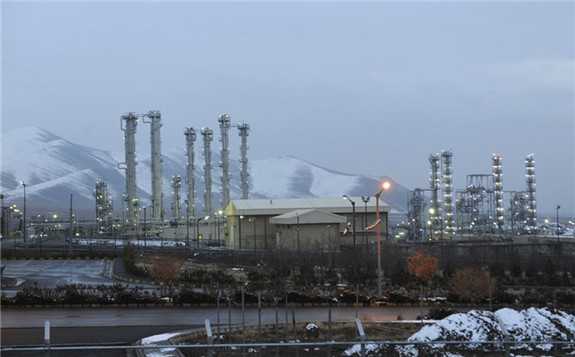 A file photo from Jan. 15, 2011, shows Iran's heavy water nuclear facility near Arak. Iran plans to walk back modifications to a nuclear reactor at the site. Hamid Foroutan/AP
A file photo from Jan. 15, 2011, shows Iran's heavy water nuclear facility near Arak. Iran plans to walk back modifications to a nuclear reactor at the site. Hamid Foroutan/AP
Iran is on the verge of crossing a key line included in the nuclear deal it reached with the U.S. and other powers in 2015. As soon as Thursday, it's expected to announce that its uranium stockpiles have exceeded limits set by the deal.
"I think it's a major bridge for them to go across," says David Albright, president of the Institute for Science and International Security, which monitors Iran's nuclear program. Albright and other experts believe that breaching the limit could spell the beginning of the end for the nuclear agreement, which the U.S. exited in May 2018.
The nuclear deal is full of numbers and figures, but its purpose is simple: to slow down Iran's nuclear program. Before the deal, Iran was within a few weeks of getting enough highly enriched uranium for a nuclear bomb if it chose to. The deal pushed that timeline back from weeks to about a year.
Under the multilateral Joint Comprehensive Plan of Action, Iran was forced to get rid of lots of low-enriched uranium. Low-enriched uranium is kept at levels far below the 90% level considered suitable for building nuclear weapons. But large quantities of low-enriched uranium can be refined to bomb-grade relatively quickly. So the deal capped Iran's stockpile of low-enriched material to just 300 kilograms, or 661 lbs.
But that was then. Last year, President Trump pulled out of the deal. Without the economic benefits Iran was promised in exchange for limiting its nuclear program, it has begun going back on the agreement. In May, it announced it would begin accumulating more low-enriched uranium.
"We will exceed the 300-kg limit," Behrouz Kamalvandi, the spokesperson for the Atomic Energy Organization of Iran, told reporters last week. By the organization's calculations, Iran will cross the line on June 27.
Albright says from a technical perspective, crossing the line is not that big a deal. Low-enriched uranium cannot be directly turned into a weapon.
"Not much is going to change," he says. "They're going to have to produce around a ton, or a thousand kilograms, before you really start to get nervous."
But the 300-kg limit is not the only number in the agreement. Iran has warned it will begin crossing other lines in coming weeks as well.
It plans to increase the levels at which it enriches its uranium fuel, and to walk back modifications it planned to make to a key nuclear reactor at Arak.
"With the threats now that Iran might start violating some of the core principles of the deal, this deal that's been on life support might be dead," says Corey Hinderstein,the Nuclear Threat Initiative's vice president of international fuel cycle strategies. As an official at the U.S. Department of Energy, she oversaw parts of the nuclear deal until 2017.
She says that a big part of why things are falling apart now goes back to the sanctions the U.S. reimposed last year. They punish anyone who does business with Iran, including companies in other places that remain in the agreement: Europe, China and Russia.
European companies had hoped to do business with Iran. But in the face of U.S. sanctions, "We've seen those companies have to step back and say, 'We can't afford to lose the U.S. market,' " Hinderstein says.
Iran is now stepping across one line in the deal at a time, in an effort to pressure European nations to provide promised economic relief. European negotiators are racing to complete a package of humanitarian aid by early July, says Aniseh Bassiri Tabrizi with Great Britain's Royal United Services Institute.
"They are working towards that end goal, to showcase to the Iranians that they are actually working in practical terms to address some of these issues," Tabrizi says.
If that aid — which includes things like medical supplies — can be delivered without U.S. objection, then it may open the possibility of more economic benefits flowing to Iran. But Tabrizi says it remains to be seen whether it will be enough.
"Iran has made it clear that it needs also to be able to continue to export its oil, to see the incentive of remaining a party of the nuclear deal," she says.
For now, Hinderstein says, Iran is still about a year away from getting material together for a bomb — should it decide to do so. "We still have some time to work with," she says.
But with each line that Iran crosses, the timeline shrinks, and the nuclear deal fades further.
